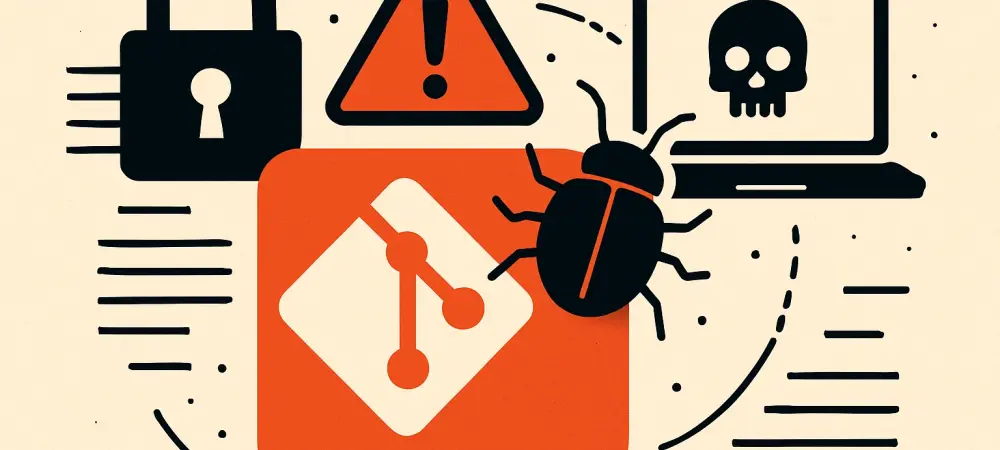What happens when a tool as fundamental as Git, the cornerstone of software development, becomes a gateway for cyber attackers? In a chilling alert, the Cybersecurity and Infrastructure Security Agency (CISA) has spotlighted a severe flaw in Git, known as CVE-2025-48384, that’s already being exploited across the digital landscape. This vulnerability isn’t just a technical hiccup—it’s a potential disaster for developers, organizations, and entire supply chains. Picture malicious code slipping into your repository, silently waiting to strike during a routine checkout. This is the reality facing countless systems today, demanding urgent attention.
Why This Hidden Flaw in Git Spells Trouble
The significance of this issue cannot be overstated. Git powers collaboration and automation in software development, from small startups to global enterprises. Yet, CVE-2025-48384, with a high-severity CVSS score of 8.0, threatens to unravel that trust by allowing attackers to write arbitrary files on a system. This flaw, tied to how Git processes configuration data, could compromise everything from individual developer workstations to sprawling CI/CD pipelines. As supply-chain attacks surge—evidenced by a 2025 report from Cybersecurity Ventures estimating a 30% rise in such incidents—ignoring this warning could prove catastrophic.
The stakes are particularly high in automated environments where untrusted code is often processed without scrutiny. A single exploit could ripple through an organization, tainting codebases and exposing sensitive data. CISA’s alert underscores a harsh truth: even the most relied-upon tools can harbor silent dangers, and the time to act is now before the damage spreads further.
Breaking Down the Danger: How the Exploit Works
At the heart of CVE-2025-48384 lies a deceptive simplicity. Git mishandles carriage return (CR) and line feed (LF) characters in configuration files like .git/config, stripping them when reading but failing to properly quote values ending in CR when writing. This inconsistency creates a loophole—an attacker can craft a malicious path during submodule initialization, altering data post-processing and opening a door to chaos.
Consider a scenario where a symlink points to critical directories like .git/hooks. By planting a harmful script, such as a post-checkout hook, attackers can execute code with the same privileges as the user. While no direct links to ransomware have surfaced, CISA notes the risk of supply-chain compromise looms large, especially for teams cloning untrusted repositories. Classified under CWE-59 (Link Following) and CWE-436 (Interpretation of Trusted Input), this flaw reveals deeper systemic gaps in input validation that must be addressed.
The real-world implications are stark. A developer working on a shared project might unknowingly trigger malicious code during a routine task, potentially infecting an entire build system. This isn’t a distant threat—it’s a live issue disrupting workflows and demanding immediate vigilance from every corner of the tech community.
Voices of Concern: CISA’s Stark Warning
CISA has minced no words about the gravity of this vulnerability. In their official statement, they declared, “This flaw poses a significant risk to software development environments, especially in automated CI/CD pipelines where untrusted code is frequently handled.” Their urgency mirrors a growing trend in cybersecurity: small misconfigurations can snowball into breaches with devastating consequences, as seen in recent supply-chain attacks targeting third-party dependencies.
Industry experts echo this concern. A cybersecurity analyst at a leading firm noted, “The privilege level at which malicious code can execute through this Git flaw makes it a top-tier threat. Organizations can’t afford to delay response efforts.” This alignment of perspectives highlights a unified front—remediation isn’t optional; it’s a critical necessity to safeguard digital ecosystems against escalating dangers.
Battling the Breach: Steps to Secure Your Systems
Fortunately, actionable measures exist to counter this threat, and CISA has laid out a clear path for mitigation. The first step is non-negotiable: update Git to version 2.50.1 or apply patches for older maintenance tracks ranging from 2.43.7 to 2.49.1, available through official kernel.org repositories. Delaying this update risks leaving systems exposed to active exploitation.
For organizations in cloud or enterprise settings, adhering to Binding Operational Directive (BOD) 22-01 controls offers an additional layer of defense by enforcing patching or disabling vulnerable installations. Meanwhile, temporary safeguards can help bridge the gap—disabling Git submodule initialization or removing .git/hooks/post-checkout scripts from CI/CD runners and developer workstations can curb potential damage until updates are complete. Time is of the essence, with CISA setting a firm remediation deadline of September 15, 2025. Meeting this target ensures compliance and minimizes the risk of unauthorized code execution. Beyond immediate fixes, this incident serves as a reminder to prioritize proactive security practices, embedding robust checks into every stage of the development lifecycle.
Looking Back: Lessons from a Digital Close Call
Reflecting on this crisis, the exposure of CVE-2025-48384 stood as a sobering reminder of how even trusted tools could harbor hidden risks. The active exploitation of this Git flaw had forced organizations to confront vulnerabilities in their most fundamental systems, revealing the fragility of unchecked automation. It was a wake-up call that echoed through the industry, urging a reevaluation of security protocols. Moving forward, the path was clear: prioritize updates to patched versions, adhere to stringent security directives, and maintain interim protections where delays persisted. Beyond these steps, fostering a culture of continuous monitoring and input validation promised to fortify defenses against similar threats. As the dust settled, the focus shifted toward building resilience, ensuring that future innovations in software development would stand on a foundation of unwavering security.

